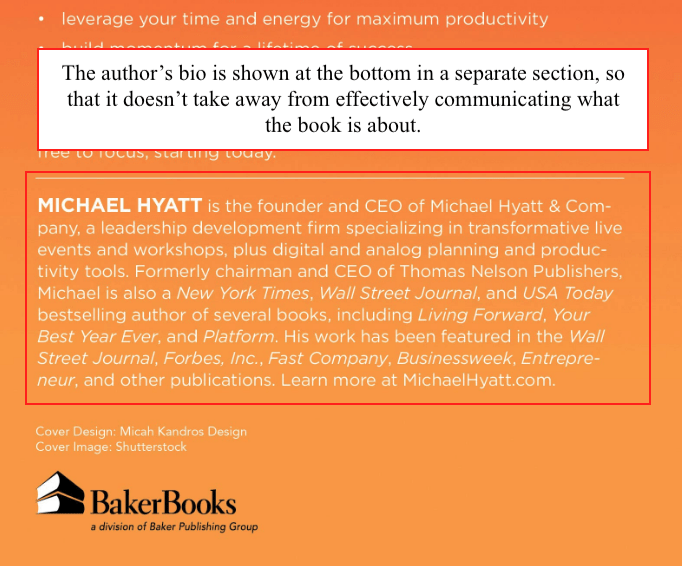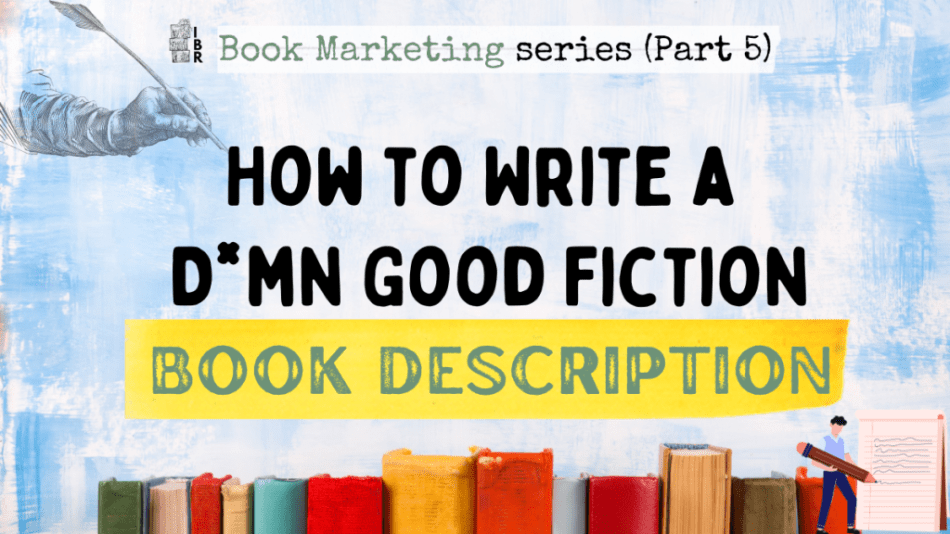Are you an aspiring author looking to make a splash in the literary world? Well, listen up because I’ve got some valuable advice for you. The book description may seem like a small part of the whole package, but trust me when I say it holds immense power. Not only is it a crucial marketing tool, but it’s also the first thing potential readers see when they come across your book. That’s why it needs to be both compelling and attention-grabbing. Think of it as the hook that reels readers in. But that’s not all – you need to go beyond the surface and tap into the reader’s pain points, showing them that your book offers the solution they’ve been yearning for. And don’t forget to legitimize yourself as the author, building that trust with your potential readers. Leave them hanging, wanting more, by creating an open loop that will only be resolved by reading your book. Just take a look at some examples: “Vivid Vision” by Cameron Herold and “The 4-Hour Workweek” by Tim Ferriss nail it, while “The Hard Thing About Hard Things” by Ben Horowitz misses the mark. So, dear author, don’t underestimate the importance of a compelling book description – it could be the difference between success and obscurity.

The Importance of a Compelling Book Description
When it comes to marketing a book, the book description plays a crucial role. It serves as a powerful tool that can capture the reader’s attention, spark their interest, and ultimately convince them to buy the book. Typically placed on the back cover and top of an Amazon page, the book description is the first glimpse readers get into what the book is about and why they should read it.
The Role of a Compelling Hook
A compelling hook is what grabs a reader’s attention and draws them into the book description. It serves as the initial spark that piques their curiosity and makes them want to learn more. A well-crafted hook can make all the difference in whether or not a reader decides to continue reading and potentially purchase the book.
One effective way to hook your readers is by addressing their current pain. Think about the problems, challenges, or frustrations your target audience might be facing. By acknowledging their pain points and showing that your book offers a solution, you’re immediately engaging the reader and showing them why your book is relevant to their lives.
Another way to create a compelling hook is by creating curiosity and interest. You can achieve this by using intriguing questions or statements that make readers wonder what the book is all about. By tapping into their curiosity, you’re encouraging them to keep reading and find out more about what your book has to offer.
Explaining How the Book Solves Pain
Once you’ve grabbed the reader’s attention with your hook, it’s important to explain how your book can solve their pain. This is where you provide more details about the solutions and insights your book offers. Clearly describe how your book can help readers overcome their challenges or achieve their goals.
Highlight the benefits the reader will gain from reading your book. Whether it’s learning new skills, gaining knowledge, or finding inspiration, make sure to communicate the value your book provides. By focusing on the positive outcomes readers can expect, you’re giving them a compelling reason to choose your book over others.
Legitimizing Yourself as the Author
Establishing credibility and expertise is essential in gaining the trust of your readers. Let them know why you’re qualified to write this book and why they should trust your insights and advice. Share your relevant experience, credentials, or any accomplishments that showcase your expertise in the subject matter.
Building trust with the reader is crucial, especially in a crowded book market. By demonstrating your authority and credibility, you’re assuring readers that they’re in capable hands. This can make a significant impact on their decision to purchase your book.

Creating an Open Loop
Creating an open loop is a powerful technique that leaves the reader wanting more. By teasing the content of your book without giving away all the details, you’re creating a sense of intrigue that makes readers curious to discover what lies within its pages. This can be achieved by hinting at intriguing stories, unique perspectives, or valuable insights that await the reader.
Leaving the reader with a sense of anticipation can increase their desire to read your book. By creating an open loop, you’re not only capturing their attention but also laying the foundation for a deeper connection with your audience.
Examples of Good Book Descriptions
Let’s take a look at a couple of examples of book descriptions that effectively utilize the strategies discussed above:
Analyzing ‘Vivid Vision’ by Cameron Herold
In “Vivid Vision,” Cameron Herold presents a compelling hook right from the start: “Have you ever had a crystal-clear vision of your future, but struggled to make it a reality?” This hook addresses the reader’s potential pain of unrealized visions and immediately engages them. The book description goes on to explain how Herold’s insights and strategies can help readers transform their visions into reality, providing clear solutions to their pain. By highlighting the benefits such as increased focus, alignment, and growth, the book description effectively communicates the value readers can gain from reading “Vivid Vision.”
Examining ‘The 4-Hour Workweek’ by Tim Ferriss
Tim Ferriss captivates readers with a bold statement in the book description of “The 4-Hour Workweek”: “Forget the old concept of retirement and the rest of the deferred-life plan.” This hook challenges the reader’s conventional mindset and immediately creates curiosity. Ferriss then explains how his book provides a step-by-step blueprint for escaping the 9-5 grind, achieving financial freedom, and living life on your own terms. By highlighting the benefits of location independence and time freedom, the book description offers a clear solution to the reader’s pain. This powerful combination of a compelling hook, clear solutions, and tangible benefits makes “The 4-Hour Workweek” an enticing read for those seeking a different approach to work and life.

Examples of Bad Book Descriptions
While there are examples of book descriptions that effectively engage readers, it’s also important to understand what makes a book description ineffective. One such example is “The Hard Thing About Hard Things” by Ben Horowitz.
Critiquing ‘The Hard Thing About Hard Things’ by Ben Horowitz
The book description of “The Hard Thing About Hard Things” fails to establish a compelling hook that grabs the reader’s attention. It lacks a clear statement that addresses the reader’s pain or creates curiosity. Without a strong opening, the book description struggles to engage readers and convince them that the book offers solutions to their challenges. Additionally, the description lacks a clear explanation of the benefits readers can gain from reading the book. By not effectively communicating the value and outcomes readers can expect, the book description falls short in effectively conveying why readers should choose this book over others.
In conclusion, a compelling book description is a crucial marketing tool for authors. By crafting a strong hook, explaining how the book solves the reader’s pain, legitimizing yourself as the author, and creating an open loop, you can effectively engage readers and increase the chances of them choosing your book. By analyzing examples of good book descriptions like “Vivid Vision” by Cameron Herold and “The 4-Hour Workweek” by Tim Ferriss, as well as critiquing a less effective book description like “The Hard Thing About Hard Things” by Ben Horowitz, you can gain valuable insights into what makes a book description compelling and impactful. Remember, the book description is your opportunity to captivate your readers and convince them that your book is worth their time and investment.
